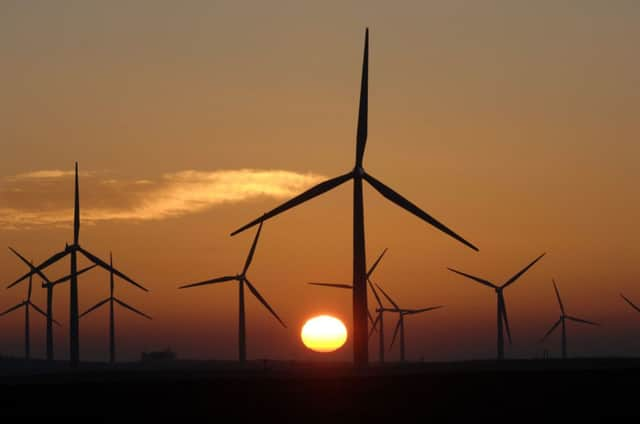Relying on wind power won’t be miracle solution


However, it does have control of general planning. Further, the owners of Scotland’s conventional electricity generation capacity have currently no incentive to expand it. These factors have enabled Holyrood effectively to take control of all new energy developments. This has already resulted in the construction or consent of renewable capacity to meet the more than 96 per cent of the SNP’s 2020 target of the “equivalent of 100 per cent of Scottish electricity consumption.
Advertisement
Hide AdAdvertisement
Hide AdBased on Scottish Government figures, constructed and consented capacity amounts to 13.7GW.
We estimate the “100% equivalent” requirement to be 14.2GW. As there is more than 7GW of further capacity unconsented in the planning system it is hard to understand the SNP government’s current attempts to modify planning policy to facilitate consent of yet more onshore wind turbines.
No technical or economic case was ever made for this 100% target. Consumer-paid subsidies treble the wholesale price of electricity from offshore wind, for example. Infrastructure costs will increase it still more. The financial and security of supply consequences for the Scottish economy have never been assessed by government. The total subsidies for Scotland’s approximately 36TWh consumption could amount to about £3.7 billion. At present these costs are met by all UK consumers. In the event of Scottish independence they would become the responsibility of Scotland’s much smaller population alone.
The environmental lobby has promoted the view that forms of generation other than renewables are unnecessary. However, most of this is wind, and we cannot control when the wind will blow and so when wind turbines will deliver power.
Renewable technologies other than wind can be ruled out as significant contributors for the foreseeable future or possibly for ever. In cloudy Scotland solar is uneconomic nonsense. Wave power is far from large scale realisation and in any case has relatively small potential.
So what is this other source to be if not nuclear? The environmental lobby will vigorously oppose the construction of coal fired power stations, although even ultra-“green” Germany is building them. The same lobbyists will oppose the exploitation of shale gas.
Current nuclear power is not cheap compared with coal, though it is comparable to the cost of gas generation, and is cheaper than any wind technology. The strike price which the UK government has agreed for Hinkley C is less than that for onshore wind with renewables obligation costs, and only two thirds of that for offshore wind. Nuclear plants can be built with access to the existing grid and are controllable rather than intermittent and uncertain, providing electricity when required by the consumer. Nor do they incur massive new infrastructure and load-balancing costs.
Scotland would appear to be in the happy position of having enough conventional generation to meet its peak demand on those days in winter when there is essentially no wind blowing, one third of this from two proven safe and reliable nuclear plants. But this apparent self sufficiency is illusory; figures recently released by National grid show that over the last three years electricity has had to be imported from England on 162 days in the last three years. Moreover, should we fail to replace any of our reliable capacity in the future we would become very heavily dependent on imports, regardless of the number of wind turbines that have been deployed.
Advertisement
Hide AdAdvertisement
Hide AdBuilt and consented wind capacity is more than 12GW. This is twice Scotland’s peak electricity demand. So at times of low demand and strong winds there could be a huge excess of wind generation, and Scotland would depend on its only customer, England, to purchase this surplus, at the bottom of the market, at whatever rock bottom price they are prepared to offer.
This highlights perhaps the most serious misunderstanding of all. This is the assumption that wind generated electricity is a valuable exportable asset which could make Scotland “the Saudi Arabia of renewables”. Quite simply, wind is not like oil. Electricity cannot be stored in large quantities, cannot be economically transported over long distances and, in the case of wind power, is not available on demand. One does not have to understand the technologies to appreciate the difference, simply to look at what has happened. Oil and gas companies queued up to buy licences to explore the North Sea and pay billions in taxes. By contrast, we the consumers are paying wind energy operators millions.
Professor Jack Ponton FREng is a representative of Scientific Alliance Scotland
SEE ALSO